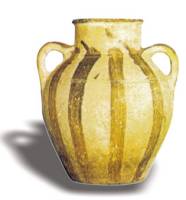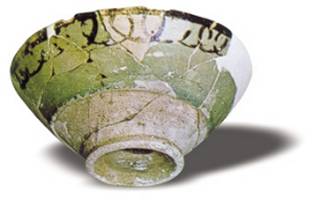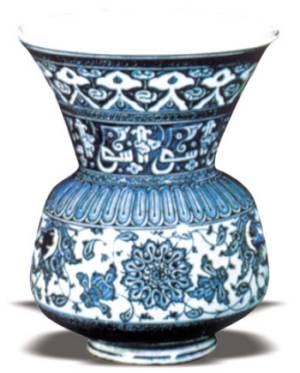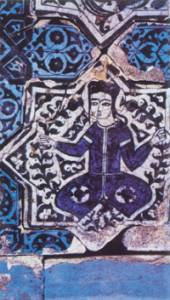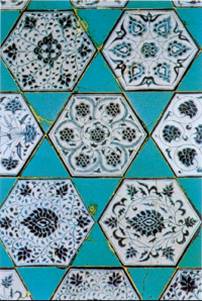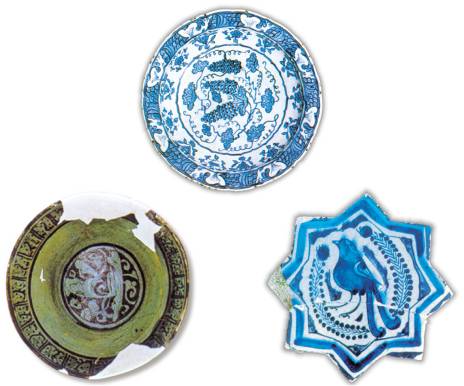Simple dishes, pots, bowls and oil lanterns with turquoise, green, violet and yellow-brown glazes are seen in considerable number. They are usually made of reddish or off-white clay with a coarse grain. The glaze is rather thick.
Following the defeat of the Byzantine army in 1071 by the Anatolian Seljuk Turks, a rapid increase of Turkish influence was witnessed in Anatolia, which led to the creation of countless works of art. The consolidation of the Seljuk State was interrupted by Mongol invasions in the middle of the 13th century but the arrival of Turkish tribes from Turkestan, Azerbaijan and Khorasan led to a revival of Turkish tradition and culture in Anatolia and to a new period of research in art and culture.

